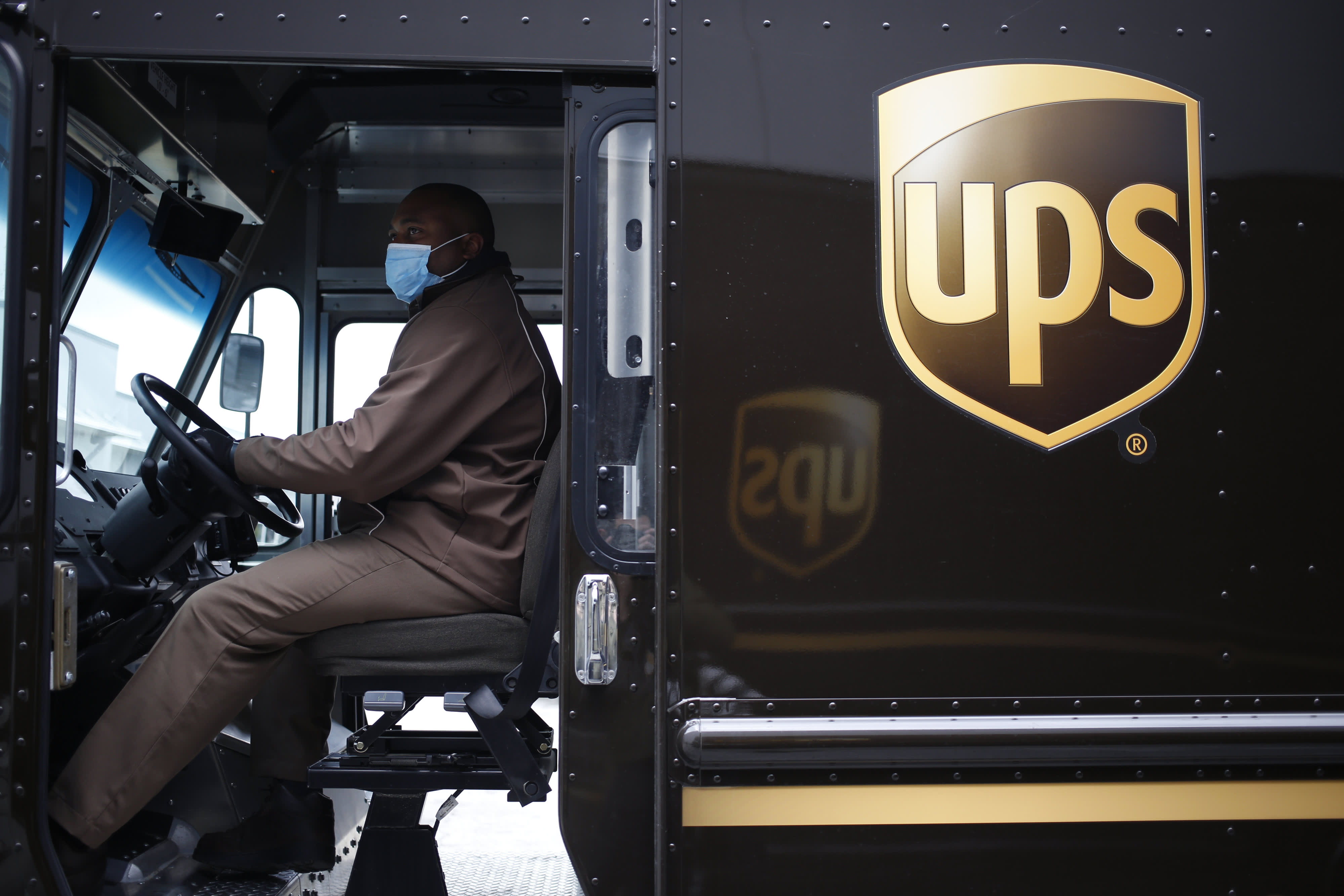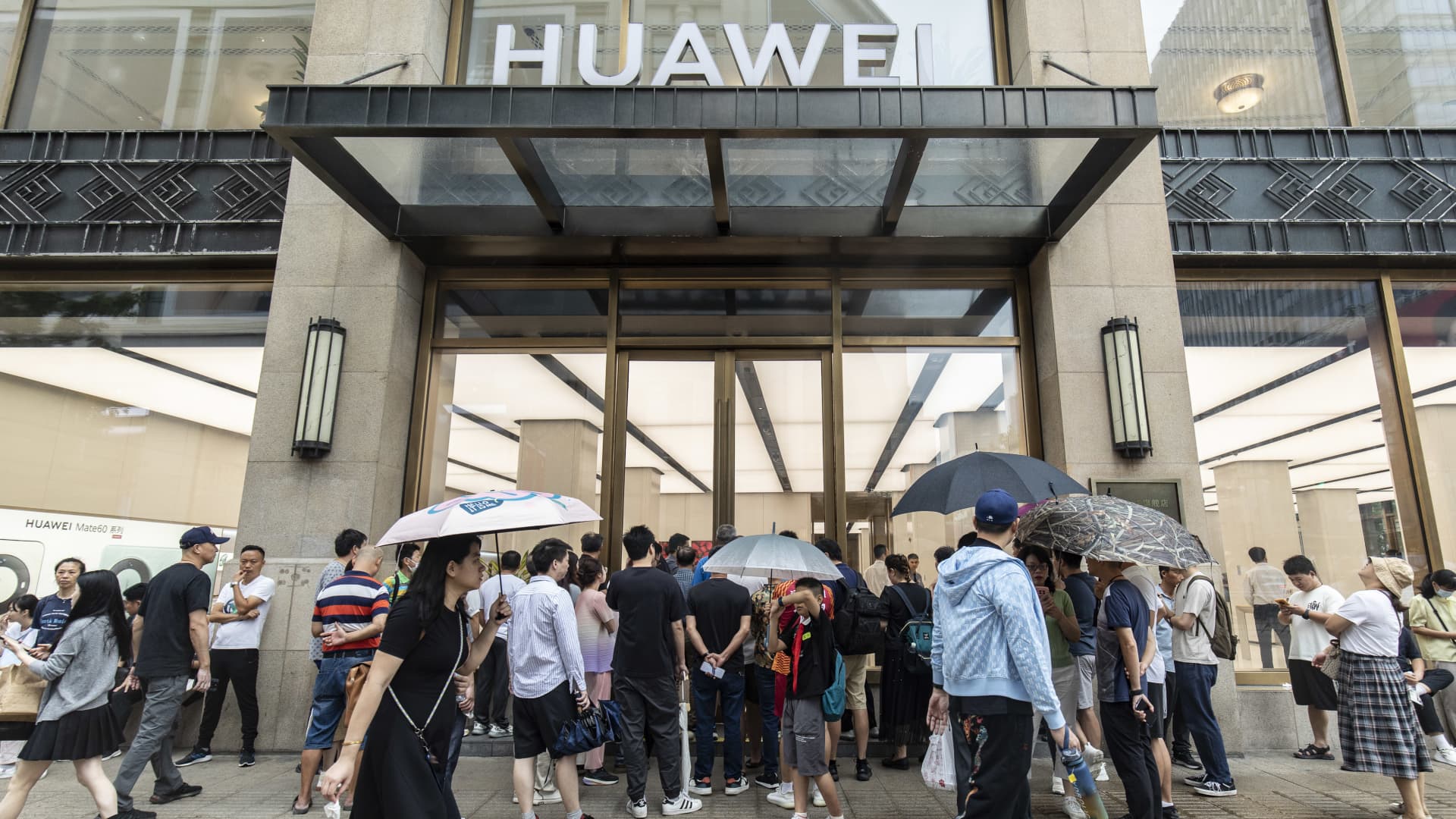UPS shares jump on strong fourth-quarter earnings as Covid drives online shopping

A driver for an independent contractor wears a protective mask while operating a delivery truck to delivery N95 respirator masks outside a United Parcel Service Inc. (UPS) Ground sorting facility in Louisville, Kentucky, U.S., on Monday, April 13, 2020.
Luke Sharrett | Bloomberg | Getty Images
Shares of UPS jumped more than 4% in premarket trading Tuesday after the company reported better-than-expected revenue and profits over the busy holiday shopping season, reflecting a boom in online shopping due to the Covid-19 pandemic.
Revenue for the Atlanta-based logistics and delivery company jumped 21% to $24.9 billion during the fourth quarter ended Dec. 31, marking a record for UPS as it navigated unprecedented e-commerce sales over the holidays.
The company’s domestic package division saw a 17.4% increase in year-over-year revenue as its network filled to the brink with packages from online retailers, including Amazon.
Here’s how UPS did during the fourth quarter compared with what investors expected, based on estimates compiled by Refinitiv:
- Adjusted EPS: $2.66 per share vs. $2.14 expected.
- Revenue: $24.9 billion vs. $22.87 billion expected.
The company reported a sizable loss of $3.26 billion during the quarter after disclosing $5.6 billion in charges. Those costs included a $4.9 billion mark-to-market pension charge, a $114 million after-tax impairment charge and a $545 million impairment charge related to the company’s sale of UPS Freight.
UPS did not provide an outlook on its future earnings due to ongoing uncertainty from the pandemic.
“Our financial performance in the fourth quarter exceeded our expectations, and I thank all UPSers for their extraordinary efforts to deliver industry-leading service through the holidays.” CEO Carol Tome said in the earnings statement.
The results come off of a record-breaking shipping season fueled by the pandemic. Shoppers were tempted with holiday sales as early as October to spread out the number of packages in the system at any one time.
At times, UPS told drivers to stop picking up packages at some large retailers like Nike and Gap after they exceeded capacity allocations set by the delivery company. UPS also instituted surcharges in an attempt to offset higher costs associated with the increased package volume and pandemic.
The company’s adjusted operating margin grew slightly during the quarter to 11.5%, though the margin for its domestic shipping unit fell slightly to 8.8%.
On top of holiday deliveries, UPS and rival FedEx began shipping Covid vaccines from Pfizer and Moderna across the U.S. in December, bolstering their health-care delivery businesses.
“As we look past 2020 into the new year, we are optimistic. During the fourth quarter, we began transporting COVID-19 vaccines and we stand ready to deliver hope and health to people around the world,” Tome said.




